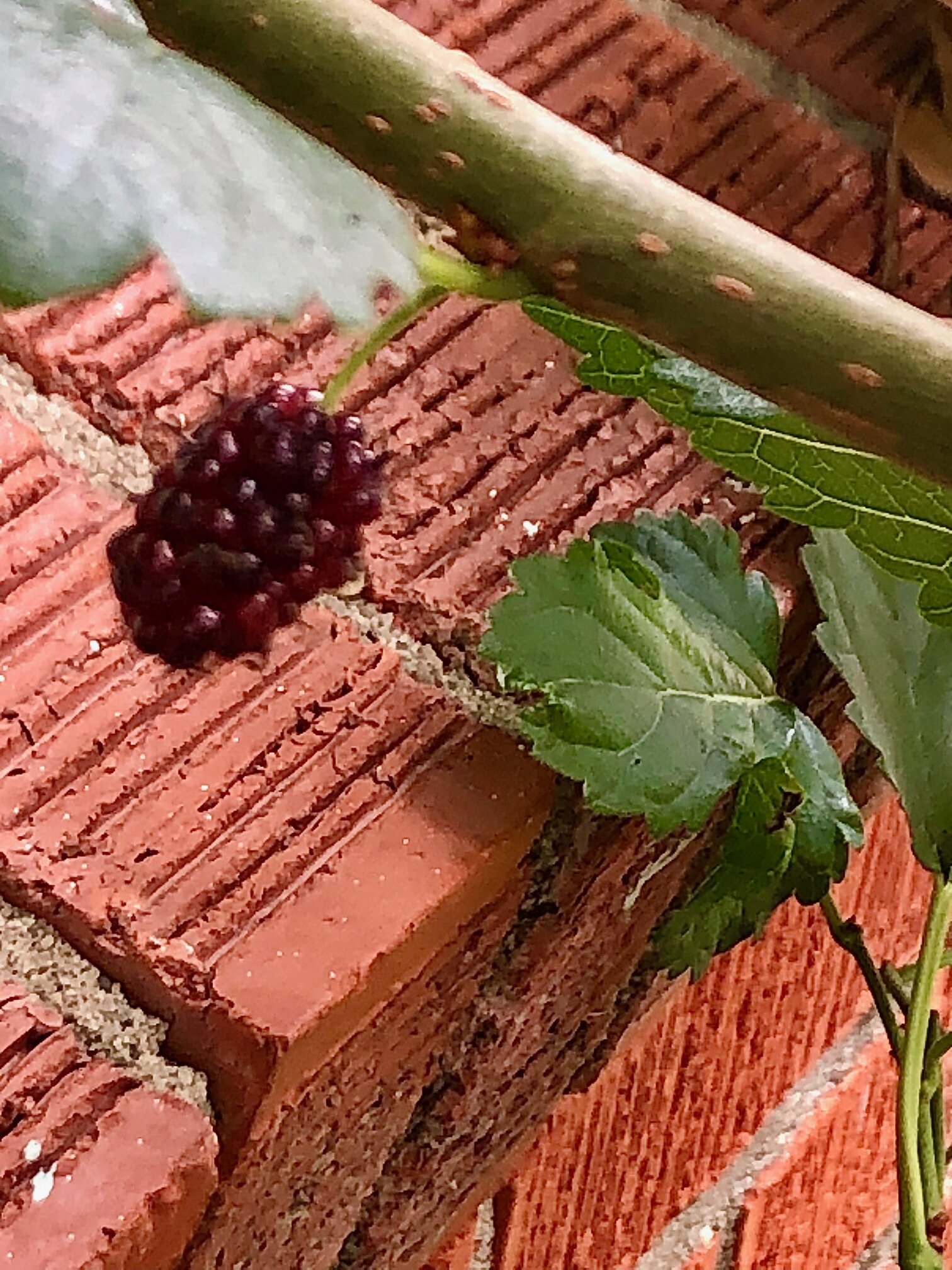Mulberry
Tree Stories: Mulberry
Our lives are an uninvited adventure these days. Neighborhood walks replace usual routines and entertainment for many of us. Deep gratitude goes to those who carry on essential services while others must stay home.
Uplifting to our spirits is the arrival of spring, right on schedule. Barren trees are greening up, some are swapping old leaves for new, and blooms are everywhere. Migratory birds are heading north and passing through.
A common sight, and often-underappreciated local tree, is the mulberry (Morus spp). Most have recently sprouted new leaves and bloomed. Now they are producing the small, edible berries that our feathered friends relish.
Ripe fruits are typically reddish to purple on all varieties of mulberry. (Red mulberries are US natives while white and black are Asian imports.) These trees have been valued since ancient times because of the abundant berry production and the leaves that feed livestock. White mulberry leaves were used in the Orient to fatten silkworms for the silk trade. Hundreds of those trees and were imported to the US in the early 18th Century in an unsuccessful attempt to establish a silk trade here.
Mulberries are excellent shade trees that can thrive in a variety of soil conditions and in climates with long, hot summers like ours. They enjoy sun or partial shade and are fast-growing and large at maturity. Of course they perform best in fertile, moist, well-draining soil but tolerate a variety of soil conditions and have good drought resistance once established. Bark is smooth and gray with bright green spring leaves that vary in size and shape on the same tree.
Like most tress, mulberries may be affected by various insects and diseases. Early identification and recommended treatments can be used successfully; always read the label! Fall webworms may be an unsightly pest but do not usually inflict lasting damage. Because of heavy surface roots mulberries should be planted at least 6 feet from walkways, driveways, or foundations and could damage cement. Fallen fruit will not only stain walkways, but will likely be tracked indoors.
Mulberries are useful as well as visually appealing. The wood is strong and makes good tool handles. They attract and shelter birds, butterflies and small mammals and provide a larval host for the beautiful Mourning Cloak butterfly. People enjoy the berries that can be eaten fresh or dried, or made into jelly or wine. Young spring leaves can be added to salads. Native Americans used the inner bark as medicine. Consumables are high in vitamins C & K, protein, minerals and some carbohydrates. Mulberry is considered by some to be a “superfood”. And they produce oxygen so we can breathe!
You might already have a mulberry growing along a undisturbed fence line or in an vacant lot. If you have a space in your landscape for a large tree you might consider adding a mulberry. Get advice from a plant nursery (or the internet) to determine your best variety.
Enjoy nature. Please follow recommended public health guidelines. Good health everyone!
Hurricane Ike caused the loss of 40,000 trees on Galveston Island. The Galveston Island Tree Conservancy was formed to address that loss and to date has replaced almost 20,000 through grant-funded plantings and giveaways, with more planned. “Tree Stories” is an ongoing series of articles intended to bring attention to outstanding Island trees and tree care. If you have or know of a special tree on Galveston Island that should be highlighted, please email treesforgalveston@gmail.com.
Margaret Canavan is a Galveston resident, a Certified Master Gardener, and a member of the Board of the Galveston Island Tree Conservancy.




